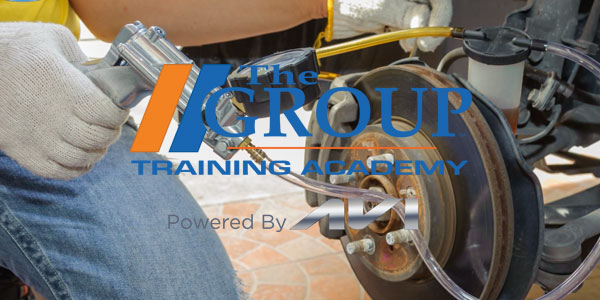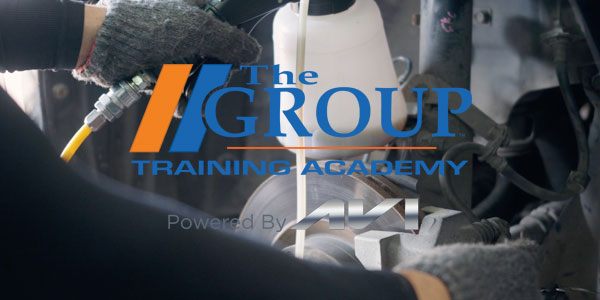QUESTION: What’s so hot about ceramic brake pads?
ANSWER: In a nutshell, ceramic pads are quieter than semi-metallic pads. Ceramic pads are also less harsh on rotors than their semi-metallic cousins, tend to wear better, and unlike many European formula non-asbestos organic (NAO) pads, don’t produce a lot of ugly black brake dust that sticks to the wheels.
“Ceramic” has been a buzzword for a number of years in the brake pad business. Ceramic brake pads were first installed as original equipment on a few import cars back more than two decades ago.
Over the years, the use of ceramic linings has steadily grown, and today nearly 75 percent of all new vehicles come factory-equipped with some type of ceramic linings. This has created a growing demand for ceramic replacement linings in the aftermarket, to which brake suppliers have responded by introducing their own ceramic brake pad product lines.
The trouble is that “ceramic” is a very vague word that some say has been misused and abused. There is no standard industry definition of what a ceramic brake pad is supposed to be. It’s a lot like trying to describe pizza. Everybody has his or her own recipe, and some are better than others.
The only thing we can say about ceramic brake pads, in general, is that they do contain some type of ceramic fibers or particles. But how much ceramic and what type of ceramic is anybody’s guess. As a rule, most ceramic pads do not contain any chopped iron, although some do. As for the ceramics themselves, the fibers or particles may range in size from 0.4 to as much as 80 microns. Smaller is supposed to be better, but suppliers disagree on that point as well.
The ceramic content and size of the fibers or particles is obviously an important factor, but is only part of the total friction package. The wear and friction characteristics of any given ceramic lining material also depend on other things, such as the fillers, binders, resins and other ingredients that go into the mix. In fact, up to 20 different ingredients may be used to achieve the desired properties. Increasing the ceramic content improves overall braking performance up to a point, but beyond a certain level it may actually reduce braking effectiveness. The trick is to find the best balance of ingredients that deliver the best results. Because of this, friction formulas are a closely guarded secret among brake suppliers. It takes a lot of money to engineer, test and perfect new friction products, so the last thing a brake supplier want to see is a competitor copying its formula.
Some of the companies that sell ceramic brake pads actually use a number of different ceramic formulas within their product lines to broaden their coverage. Other companies may use the same friction material for almost everything.
Compared to other types of friction materials, pads with a high ceramic content generally perform best at brake temperatures of less than 500 degrees F, which is well within the temperature range of most normal driving. On these kinds of application, high ceramic content pads will generally show significantly less wear (50 percent or better) than most non-asbestos organic or semi-metallic linings, and be noticeably quieter and produce almost no visible dust (which is a problem on many European cars). Because of these advantages, ceramic linings are typically marketed as a premium upgrade for cars that were originally equipped with NAO or semi-metallic linings.
Does that mean ceramic linings are the best for all applications? No. For higher temperature applications such as larger, heavier trucks and SUVs, semi-metallic linings generally perform better at temperatures above 500 degrees F. Because of this, some brake suppliers do not offer ceramic linings for certain trucks and SUVs that are originally equipped with semi-metallic linings.
Q: What qualities are most important in replacement brake linings?
A: That’s a difficult question to answer since different customers want different performance characteristics, and different applications have different requirements. In order to provide an answer, we looked to a recent JD Powers survey, which revealed the most important things brake customers want. They are:
1. Stopping power;
2. Good pedal feel (no soft or mushy pedal);
3. Quiet operation (no squeals or other objectionable noise);
4. No brake pulsation (which is a function of rotor wear and runout);
5. Durability
To satisfy these expectations, brake suppliers use a variety of friction materials ranging from high-content ceramics to low-metallics to semi-metallics to non-asbestos organics.
Ceramics provide a consistent pedal feel that is the same whether the pads are hot or cold because the coefficient of friction doesn’t drop off as quickly as semi-metallics. NVH (noise, vibration and harshness) is also less with ceramics, so that’s another reason to recommend ceramic linings.
The survey didn’t ask motorists about brake dust, but if it had it’s almost certain that owners of most BMWs and other European luxury cars would say they’re not overjoyed with the sticky black dust that their OEM brake pads leave all over their wheels. The low dust characteristics of ceramic linings would certainly appeal to this type of customer, so it’s important to let them know that low dust is one of the selling points of ceramic linings.
The survey also didn’t ask about cost, which can be a concern with some customers. Many brake suppliers offer value-line products as well as standard and premium products to appeal to the budgets of a wide range of customers. All are safe, but as a rule, value-priced linings use lower-grade materials that won’t wear as well as standard or premium linings. The pads may also lack design features such as slots and chamfers that help reduce noise.
Q: Are there any tricks for quieting brake squeal?
A: Brake noise is usually the result of high-frequency vibrations between the pads and rotors when the brakes are applied.
There are many causes of noisy pads. The underlying cause may be pads that are inherently noisy and fail to dampen noise, rough worn rotors, missing shims, springs or anti-rattle clips, excessive clearances between the pads and calipers, or the calipers and their mounts.
The most common fix is to resurface the rotors and replace the pads. A smooth finish on the rotors allows the pads to glide over the surface rather than bump and shake.
Most new OEM and aftermarket rotors come with a surface finish between 30 and 60 inches RA (roughness average), with many falling in the 40 to 50 RA range. Some OEM specifications say any finish less than 80 RA is acceptable.
A brake lathe with sharp tool bits should produce a rotor finish that meets these specifications. The most common mistakes that are made when turning rotors is using dull bits, not mounting the rotors squarely on the lathe arbor (too much runout) and turning the rotors at too high a feed rate. Some technicians and machinists will also sand the rotors after they have been turned to smooth the surface even more, though this really shouldn’t be necessary.
As for replacement pads, recommend premium pads that have the same noise-suppressing slots and chamfers as many OEM pads. High content ceramic pads are generally the quietest material (semi-mets are the noisiest).
The pads should be installed with the noise-dampening shims on the back, unless the shims are integrally molded into the pads. Another trick is to apply a thin layer of high-temperature brake lubricant to the back of the pads so the pads won’t vibrate against the calipers or caliper pistons.
There are also aerosol products that can be sprayed on the rotors to dampen noise during the initial pad break-in period. These products help fill voids on the surface and act like a lubricant to help the pads glide quietly across the rotors when the brakes are applied. The coating eventually wears off, but usually after the critical break-in period has passed.











